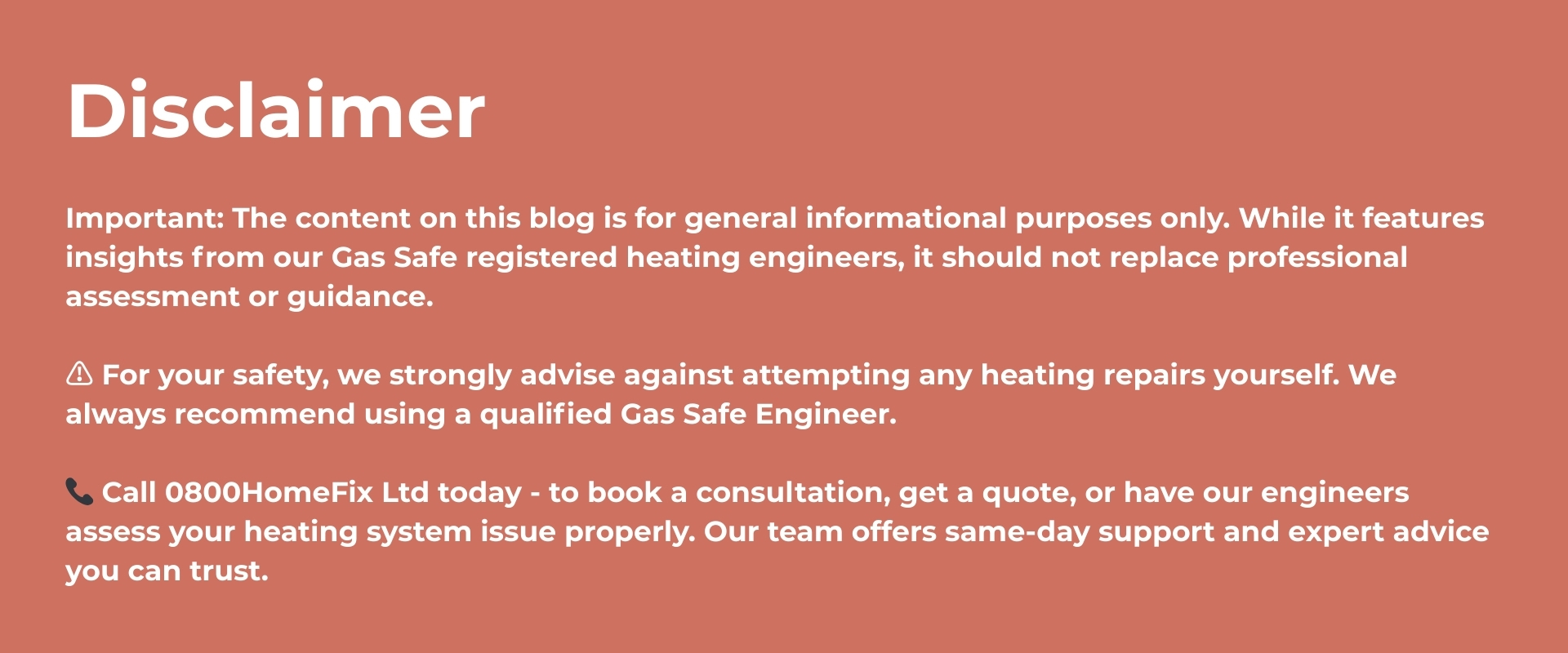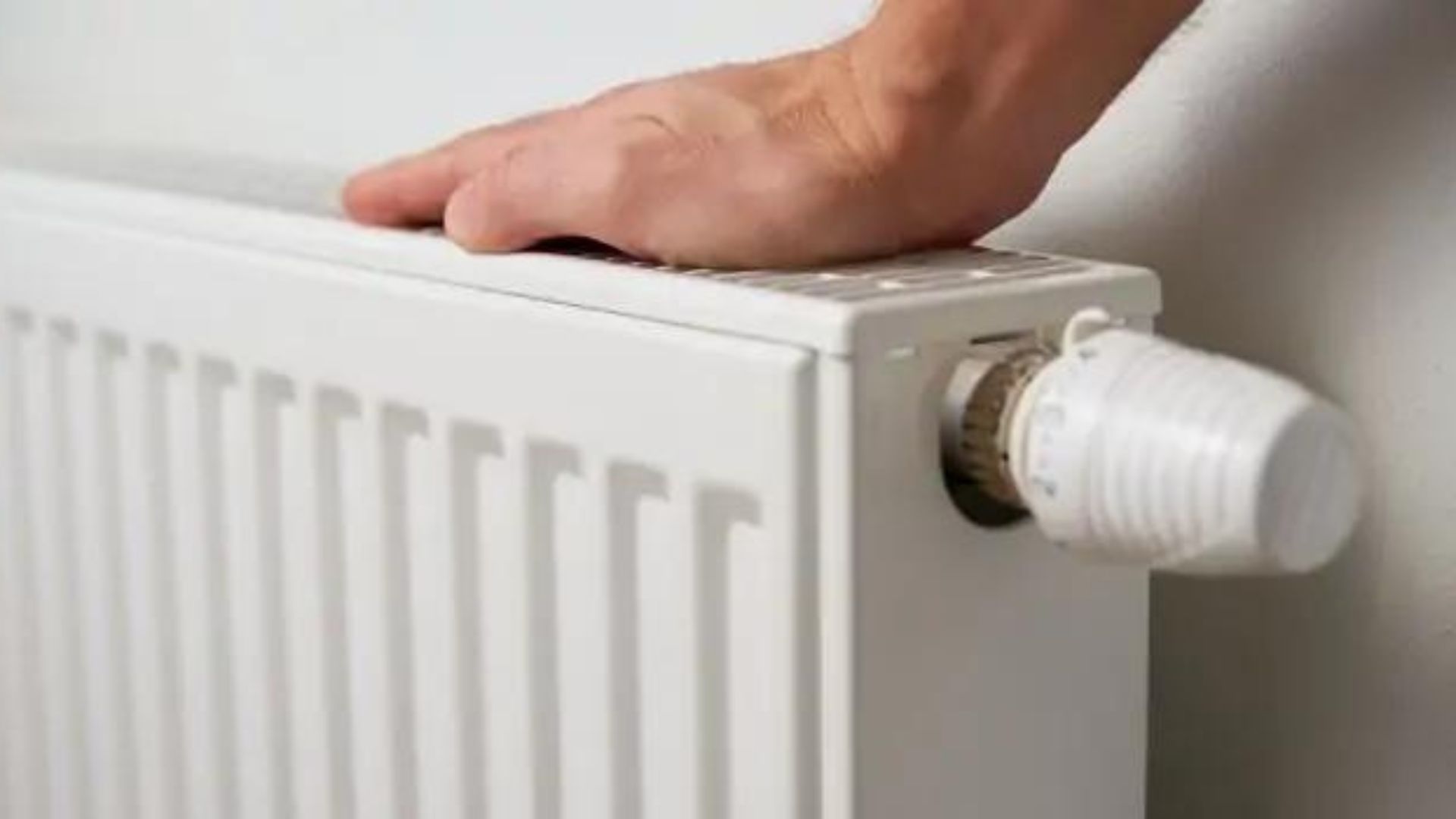

Nothing is more frustrating in the middle of winter than a radiator that feels warm at the top but stays stubbornly cold at the bottom. This is a common issue in UK households and can leave rooms feeling chilly even when the boiler appears to be working correctly. Understanding why radiators become cold at the bottom is the first step towards fixing the problem and improving the overall performance of your radiator system, which is crucial for circulating heat efficiently throughout your home.
Cold radiators not only affect comfort but also increase energy bills, especially heating bills, as inefficient radiators force your boiler to use more energy to maintain room temperatures. When radiators are blocked or not circulating heat properly, your boiler has to work harder to maintain room temperatures. By diagnosing the root cause, whether it’s sludge build-up, trapped air, or system imbalance and applying the right solution, you can restore heat to your radiators, improve efficiency, and keep your home comfortable.
How Central Heating Systems Work
Central heating systems rely on hot water circulated from the boiler through a network of pipes and radiators, with the water supply feeding the system. The boiler, whether a combi, system, or conventional model, heats the water which is then pushed around the system by a pump. As the water flows through the radiators, heat is released into the room, and the cooler water returns to the boiler to be reheated.
When working correctly, radiators should heat evenly from top to bottom, maintaining consistent temperature across the entire surface. If the bottom remains cold, it means hot water is not circulating properly. This could be caused by trapped air preventing circulation, sludge restricting flow, or issues with the pump or valves. Low water pressure can also contribute to uneven heating and poor circulation. A well-maintained system not only distributes heat evenly but also uses less energy, helping reduce household bills.
Common Causes of Radiator Problems
One of the leading causes of radiators being cold at the bottom is radiator sludge build-up. Over time, rust, dirt, and debris can accumulate in radiators and settle at the bottom, forming a thick layer of radiator sludge. Iron oxides and mineral deposits are key components of radiator sludge, as they result from the reaction of water with metal surfaces. This sludge blocks the flow of hot water, preventing it from reaching all parts of the radiator. The formation of radiator sludge is often due to the buildup of iron compounds as a result of corrosion inside the system.
Another frequent cause is trapped air. Air pockets rise to the top of radiators, which is why radiators with trapped air often feel cold at the top. However, when air disrupts circulation in the wider system, it can contribute to uneven heating and cold spots.
Internal corrosion inside the radiator can also reduce efficiency. Internal rust creates rough surfaces that trap sludge and can eventually cause leaks. Blockages elsewhere in the heating system, such as in the valves or connecting pipework, may also contribute to cold spots.
Regular radiator maintenance, including bleeding, flushing, and adding inhibitor solutions can reduce the likelihood of these problems developing.
Identifying Radiator Issues
Identifying radiator issues early can prevent long-term damage. Start by feeling the radiator from top to bottom. If the top is warm but the bottom remains cold, sludge build-up is the likely culprit. If the radiator is cold at the top but warm at the bottom, trapped air is more likely.
Check thermostats and timers to ensure the heating is set correctly. Look for visible signs of leaks, rust, or corrosion on the radiator body or valves. Reduced energy efficiency, such as higher bills or slower heating, can also signal underlying problems.
Homeowners can use a bleed key to release trapped air, which may improve performance. For deeper issues, such as suspected sludge or system blockages, professional heating system repairs from 0800 Homefix are recommended.
Understanding Cold Radiators
A radiator cold at the bottom is often a symptom of sludge that has settled and hardened inside the unit. Unlike trapped air, which is relatively easy to remove, sludge requires a more thorough approach such as flushing or power flushing to ensure the entire radiator or whole radiator is properly cleaned during maintenance.
Cold radiators may also point to larger issues with the system, such as poor installation or incorrect balancing of valves. When one radiator underperforms, it can place added strain on the rest of the system, reducing efficiency across the entire home. These problems can affect all the radiators or even multiple radiators at once, often requiring a comprehensive solution.
By understanding these underlying causes, homeowners can take appropriate action, either through simple DIY fixes like bleeding or by arranging a full inspection with gas safe engineers.
The Importance of Maintenance
Maintenance is the most effective way to prevent cold radiators. Bleeding radiators regularly helps release trapped air. Checking for leaks and corrosion ensures problems are caught before they worsen. Adding a chemical inhibitor to the system prevents sludge and rust from building up inside pipework and radiators. Regular maintenance also helps prevent radiator sludge from forming.
Annual servicing by professionals is vital. During boiler servicing, engineers will check radiators, flush where necessary – including performing a full system flush if needed, and also ensure pumps and valves are working correctly. This proactive approach keeps your heating system running smoothly and prevents costly repairs.
Fixing Radiator Issues
Fixing radiators that are cold at the bottom depends on the cause. If just one radiator is affected, and the bottom feels colder than the top, you may be able to fix radiators with a simple process like bleeding. Most radiators are made of iron or steel, which are prone to sludge buildup. If bleeding does not help, more extensive measures are required.
Flushing the system is one option. This involves removing individual radiators, loosening the connector nuts and radiator nuts slightly to prevent leaks, and draining them by waiting until water has stopped flowing. Remove the plastic cap from the lockshield valve, then use the bleed valve to release any trapped air. Clean the radiator by flushing water through different openings, paying special attention to the water entry and exit points where sludge often accumulates. After cleaning, re attach the radiator securely.
In some cases, radiators or a valve may need replacement. Faulty valves, such as the lockshield valve or thermostatic radiator valve (TRV), can stick and restrict water flow. Replacing these ensures each radiator can be controlled properly and improves overall efficiency.
Flushing the Radiator
Manual flushing can be carried out by disconnecting the radiator, placing an old towel underneath to catch any drips, taking it outside, and rinsing with a garden hose to clear blockages. While effective for single radiators, this method can be time-consuming and messy.
A professional power flush is a more comprehensive solution. Engineers connect a pump and chemical cleaner to the system, circulating fluid at high pressure to break down sludge and rust. Once cleared, inhibitor chemicals are added to protect against future build-up. After flushing, it is important to re-pressurise a pressurised system by adding water to maintain the correct pressure.
Because power flushing requires specialist equipment, it is best left to professionals like 0800 Homefix, who can ensure it is done safely and effectively.
Cleaning the Radiator
Chemical cleaners can be used to dissolve debris inside radiators. These are added to the system water, circulated, and then flushed out after a set period. As water passes through the radiator, sludge and mineral deposits can accumulate, leading to blockages in the radiator’s flow channels. Chemical cleaners help clear these blockages and restore proper heat distribution. When combined with a magnetic filter, they provide long-term protection against recurring sludge.
Magnetic filters are fitted to the heating system to capture metallic debris, rust, sludge, and other metallic debris before they settle in radiators. Installing a filter alongside inhibitor chemicals helps maintain system health and prolong boiler life.
Cleaning not only restores warmth to radiators but also improves efficiency, reducing the workload on the boiler and lowering energy costs.
The Role of the Heat Pump
In homes with heat pumps, radiators work slightly differently compared to traditional gas boilers. Heat pumps operate at lower flow temperatures, meaning radiators need to be well-maintained to distribute heat effectively.
If radiators are cold at the bottom, sludge and blockages will have an even greater impact on efficiency. Regular checks and maintenance of both the heat pump and the radiators ensure the system runs at peak performance.
For households considering renewable heating, relocating or upgrading radiators may also be necessary to achieve consistent warmth. 0800 Homefix can advise on system compatibility and maintenance.
Understanding Hot Water Systems
Traditional hot water systems use boilers to heat water which is then stored in cylinders and distributed through radiators. If radiators are cold at the bottom in these setups, the same culprits apply: sludge, air, or poor circulation.
Maintaining these systems is crucial. Adding inhibitor, bleeding radiators, and checking for corrosion all reduce the risk of blockages. Older systems, in particular, benefit from regular inspections, as corrosion tends to worsen with age.
By keeping hot water systems in good condition, homeowners avoid costly inefficiencies and extend the lifespan of their heating equipment.
The Importance of Balancing
Even when radiators are free of sludge or air, poor system balancing can cause uneven heating. Balancing involves adjusting radiator valves so that water flows evenly throughout the house. Without proper balancing, some radiators may heat fully while others remain lukewarm or cold at the bottom.
Balancing is done by adjusting the lockshield valves and thermostatic radiator valves to control flow rates. To fine-tune the flow, turn the lockshield valve by about half a turn and note its position. While homeowners can attempt simple adjustments, professional balancing ensures the system operates at maximum efficiency.
A well-balanced system improves comfort, reduces energy waste, and prevents strain on the boiler. If you suspect your system is imbalanced, 0800 Homefix can provide expert rebalancing as part of their heating system repairs.
FAQs
Q: Why is my radiator warm at the top but cold at the bottom?
A: This usually indicates sludge build-up preventing hot water from circulating at the bottom of the radiator. Although heat rises and naturally warms the top, sludge at the bottom blocks the flow, so the lower part stays cold.
Q: Can I fix a cold radiator bottom myself?
A: Bleeding the radiator can help if trapped air is the problem, but sludge usually requires professional flushing.
Q: How often should I flush my central heating system?
A: Most systems benefit from flushing every 5–10 years, but frequency depends on age and condition.
Q: Do I need a power flush or will bleeding be enough?
A: Bleeding removes air, but sludge requires flushing or power flushing to clear.
Q: Will replacing radiators fix cold spots?
A: In severe cases of corrosion or damage, replacement may be the best solution.
Q: Can magnetic filters prevent radiators becoming cold at the bottom?
A: Yes, they capture debris before it settles, helping prevent sludge build-up.
Q: Should I call 0800 Homefix if only one radiator is cold?
A: Yes, even a single cold radiator may signal sludge or imbalance affecting the whole system.
Final Word
Radiators that are cold at the bottom are usually a sign of sludge, trapped air, or circulation issues. While some problems can be resolved through simple DIY checks like bleeding, more complex issues require professional attention. By maintaining radiators regularly, using inhibitors, and booking annual servicing, you can prevent cold spots and improve efficiency.
For expert help with radiator and heating issues, contact 0800 Homefix. Their gas safe engineers provide inspections, flushing, and system balancing to keep your home warm and your energy bills under control.
For more information on this topic visit Viessmann is a leading authority on heating systems and energy efficiency. Their expert advice page explains why radiators commonly develop cold spots at the bottom, including how sludge and rust can collect and block hot water flow, and outlines safe ways to resolve these problems and maintain your central heating system’s performance. For independent guidance on radiator maintenance and troubleshooting, see Viessmann’s advice on cold radiators.
Here: https://www.viessmann.co.uk/en/heating-advice/boilers/why-is-my-radiator-cold.html

